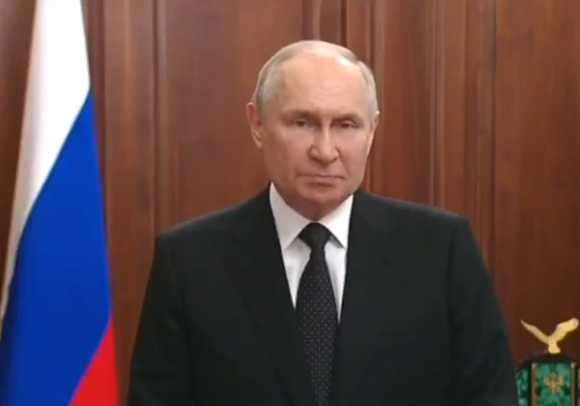LONDON — Britain announced Monday it will supply an unspecified number of long-range missile launchers to Ukraine, following the United States’ decision last week to send similar weapons. Ukrainian troops will be trained to use the systems in Britain in the coming weeks.
Ukraine has repeatedly asked the West to supply longer-range weapons as it faces an unrelenting barrage of Russian artillery in the eastern Donbas region.
Changing tactics
Britain’s Defense Minister Ben Wallace said in a statement Monday: “The U.K. stands with Ukraine in this fight and is taking a leading role in supplying its heroic troops with the vital weapons they need to defend their country from [an] unprovoked invasion.
“As Russia’s tactics change, so must our support to Ukraine. These highly capable multiple-launch rocket systems will enable our Ukrainian friends to better protect themselves against the brutal use of long-range artillery, which [Russian President Vladimir] Putin’s forces have used indiscriminately to flatten cities,” Wallace added.
Precision weapons
The British M270 multiple-launch rocket systems (MLRS) can fire 12 GPS-guided rockets up to a range of 80 kilometers in under one minute. The decision to send the systems to Ukraine was coordinated with Washington, which announced last week that it is sending similar M142 High Mobility Artillery Rocket Systems, or HIMARS.
The weapons will give Ukraine an advantage on the battlefield, according to Sidharth Kaushal, an expert on missile systems at Britain’s Royal United Services Institute.
“What MLRS systems like HIMARS and the M270 will do will be to provide the Ukrainians with the range to engage some of the longer-range Russian systems, as well as a precision-guided capability which will enable things like counter-battery fire against long-range Russian assets, as well as the ability to strike Russian targets in-depth more generally.”
Kaushal said the Kremlin’s forces have made incremental advances in recent weeks in the eastern Donbas region.[content id=”79272″]
Russian artillery
“The Russians do enjoy a substantial advantage in terms of the sheer number of systems they field, so they can make up in just mass what they lack in precision. … So, it’s quite useful in that context to use a more ‘blunt force’ approach, saturating a general area. But, of course, there is also a conscious strategic choice on Russia’s part to use civilian suffering as a tool of warfare,” Kaushal said.
The results are clear on the battlefield: towns and cities left in ruins, and high numbers of civilian casualties.
Changing conflict
Western-supplied anti-tank missiles helped drive back Russian armored columns advancing on Kyiv in the early days of the war. Now the nature of the conflict is changing.
“Russia has … shifted the emphasis of the conflict. In Donbas it has emphasized a much slower and more incremental approach to seizing territory in which it methodically prepares the ground with large amounts of artillery fire before its troops advance,” noted Kaushal.
Russia warning
Meanwhile, Putin said his armed forces would find new targets if the West supplied long-range missiles to Ukraine.
“If they are going to be supplied, we’ll make certain conclusions and use our own means of destruction — of which we have enough to strike at targets that have not yet been hit,” Putin said in a television interview Monday.
Foreign Minister Sergei Lavrov told a news conference that Russian forces would drive back Ukrainian positions. “The longer the range of the systems that are delivered, the further we will move the Nazis back from the line from which threats to the Russian Federation may come,” Lavrov said Monday. Russia has repeatedly used the term Nazis to describe the Ukrainian government, which has drawn international condemnation.
Britain and the United States said they had received Ukrainian assurances the long-range missiles would not be fired into Russian territory. Moscow warned of “absolutely undesirable and rather unpleasant scenarios” if that happened.
[content id=”52927″][content id=”79272″]







